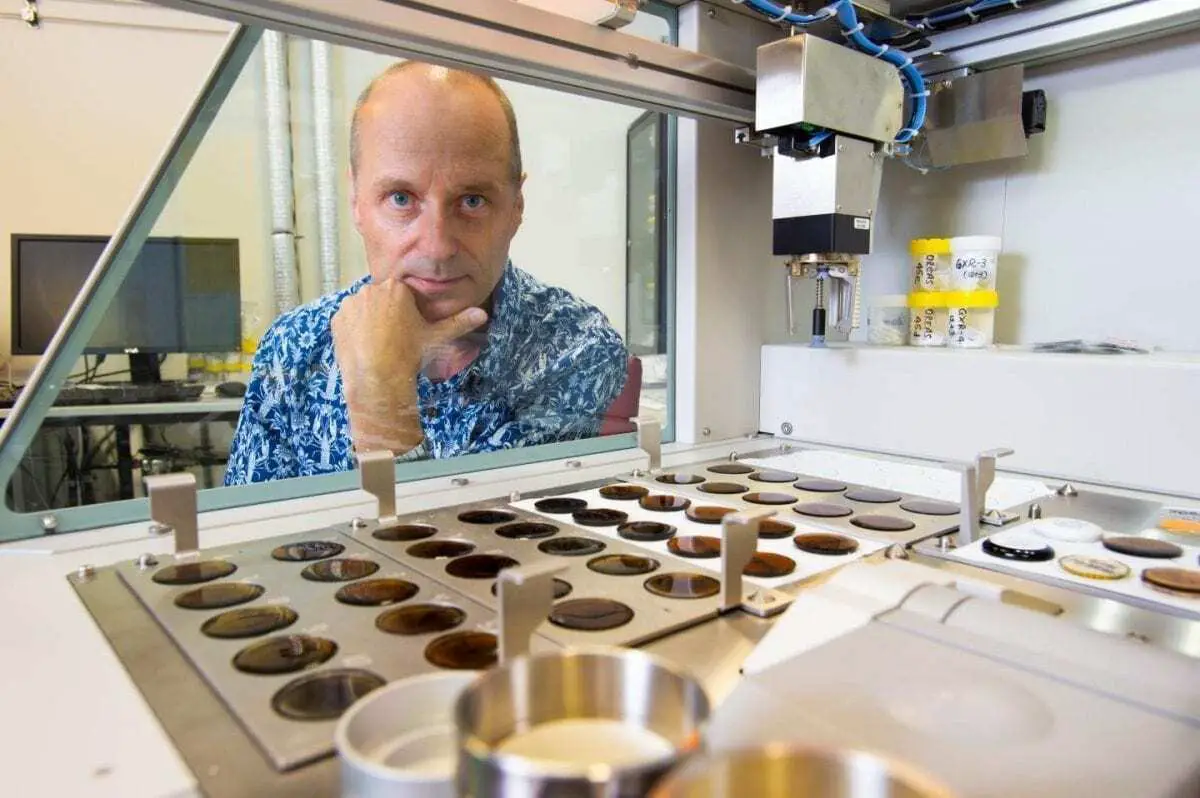A QUT geologist has published a new theory on the thermal evolution of Earth billions of years ago that explains why diamonds have formed as precious gemstones rather than just lumps of common graphite.
In the study, published in the journal Chemical Geology, the researchers looked at the magnesium oxide levels in thousands of volcanic rocks, dating at least 2.5 billion years old, that had been collected from around the world.
Professor Balz Kamber, from QUT’s Earth, Environmental and Biological Sciences School, co-authored the study with Professor Emma Tomlinson, from the Department of Geology at Trinity College Dublin. The research challenges a common theory about the evolution of the Earth and offers an explanation as to why the Earth’s mantle was cool enough to produce diamonds in the Archaean era between 4 billion and 2.5 billion years ago.
Professor Kamber said the analysis of the magnesium oxide levels in rock samples from the Archaean era contradicts the conventional belief that the Earth’s mantle was a lot hotter than it is in the current day.
“We know for a fact that the Earth produced a lot more heat back then – three to two-and-a-half times,” Professor Kamber said.
The prevailing theory among petrologists who study the origin, structure and composition of rocks, is that the Earth’s whole mantle was significantly hotter until 2.5 billion years ago.
But Professor Kamber’s analysis is that the prevailing theory is only half right. He said that while the lower mantle was significantly hotter, the upper mantle which is the area down to 670km was no hotter than it is in the present day.
“It’s the upper mantle that matters because the volcanic rocks that we observe, they come from the upper mantle,” Professor Kamber said.
To explain the theory, Professor Kamber uses the analogy of someone trying to warm their bedroom in winter by turning up the heater but failing to close the windows.
“You can produce as much heat as you like but it doesn’t get any warmer,” he said.
“So what we’re actually interested in is not how much heat we’re producing, but how warm it was in the interior of the earth.
“The assumption has been: more heat, therefore it was hotter. But what we show is: more heat but not hotter.
“The Earth was producing more heat but was also getting rid of it, opening more windows so to speak.”
The theory comes from the evidence stored in the ancient rocks on their level of magnesium oxide. Professor Kamber said the magnesium oxide levels in the vast majority of rock samples from that date similar to modern lavas, which indicated the temperatures were similar.
“Experimentalists can recreate the conditions that lead to the melting of the mantle,” Professor Kamber said. “And these experiments inform us without any doubt that the hotter the mantle at which it melts, the more magnesium in the melt.
“Our assumption had been we would find more magnesium in the older rocks compared to today.
“There are rocks that have more magnesium but they don’t come from the upper mantle.”
The cool upper mantle theory helps to explain the formation of diamonds, most of which were formed during this time period and would have turned into lumps of graphite if the upper mantle was too hot.
Professor Kamber’s paper outlining how evidence that the upper mantle was relatively cool has since been supported by a study coincidently published a few days later in the journal AGU100 by a team of German, American and British geologists who put forward a similar theory.
The understanding that the upper mantle 2.5 billion years ago was a lot cooler than previously thought also answers another long-standing area of dispute that has split geologists concerning the movement of tectonic plates.
If the upper mantle had been much hotter 2.5 million years ago, then the oceanic plates would have been thicker and difficult to move under each other.
The new evidence of a cooler upper mantle, which would have been churning hot rocks from the lower mantle upwards towards the surface to release the heat, explains how the plates riding on top of this would have moved fast and collided with each other.
Professor Kamber said understanding the thermal evolution of the Earth was critical to understanding the many aspects of our planet, such as the evolution of the atmosphere, the emergence of land, and the evolution of life.
“A geologist views the present state as the accumulated history of more than 4 billion years,” Professor Kamber said.
“We can’t understand the present fully if we don’t understand this journey.”
QUEENSLAND UNIVERSITY OF TECHNOLOGY
Header Image – Professor Balz Kamber has a new theory about the thermal evolution of Earth. Credit : QUT







